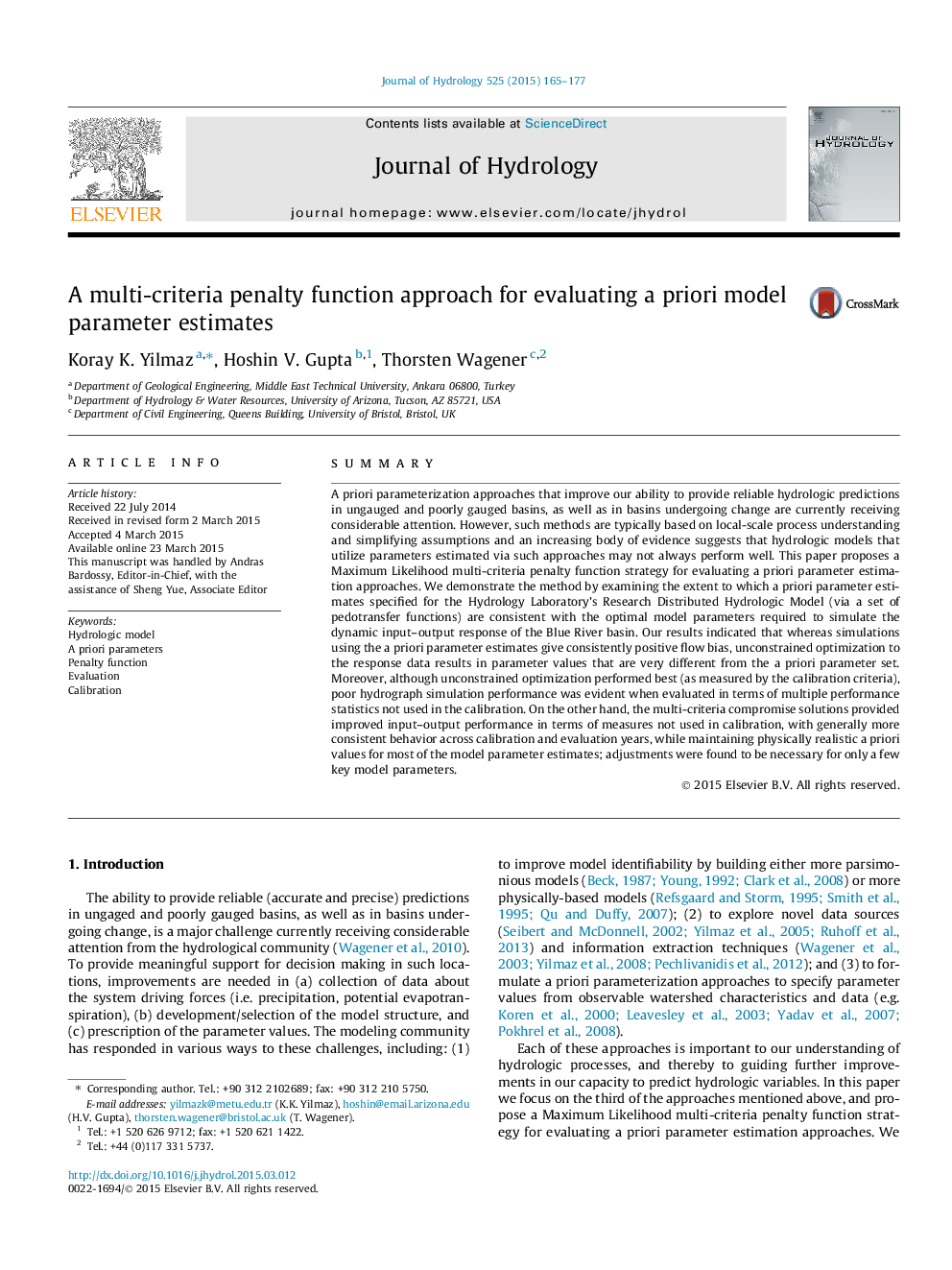| کد مقاله | کد نشریه | سال انتشار | مقاله انگلیسی | نسخه تمام متن |
|---|---|---|---|---|
| 6410586 | 1629925 | 2015 | 13 صفحه PDF | دانلود رایگان |
- Parameters estimated via both a priori and unconstrained calibration have problems.
- Penalty function approach is proposed to examine the trade-off between two approaches.
- Compromise solutions provided a balance between performance and physical realism.
- Adjustments to a few key a priori parameters were necessary for improved performance.
SummaryA priori parameterization approaches that improve our ability to provide reliable hydrologic predictions in ungauged and poorly gauged basins, as well as in basins undergoing change are currently receiving considerable attention. However, such methods are typically based on local-scale process understanding and simplifying assumptions and an increasing body of evidence suggests that hydrologic models that utilize parameters estimated via such approaches may not always perform well. This paper proposes a Maximum Likelihood multi-criteria penalty function strategy for evaluating a priori parameter estimation approaches. We demonstrate the method by examining the extent to which a priori parameter estimates specified for the Hydrology Laboratory's Research Distributed Hydrologic Model (via a set of pedotransfer functions) are consistent with the optimal model parameters required to simulate the dynamic input-output response of the Blue River basin. Our results indicated that whereas simulations using the a priori parameter estimates give consistently positive flow bias, unconstrained optimization to the response data results in parameter values that are very different from the a priori parameter set. Moreover, although unconstrained optimization performed best (as measured by the calibration criteria), poor hydrograph simulation performance was evident when evaluated in terms of multiple performance statistics not used in the calibration. On the other hand, the multi-criteria compromise solutions provided improved input-output performance in terms of measures not used in calibration, with generally more consistent behavior across calibration and evaluation years, while maintaining physically realistic a priori values for most of the model parameter estimates; adjustments were found to be necessary for only a few key model parameters.
Journal: Journal of Hydrology - Volume 525, June 2015, Pages 165-177
